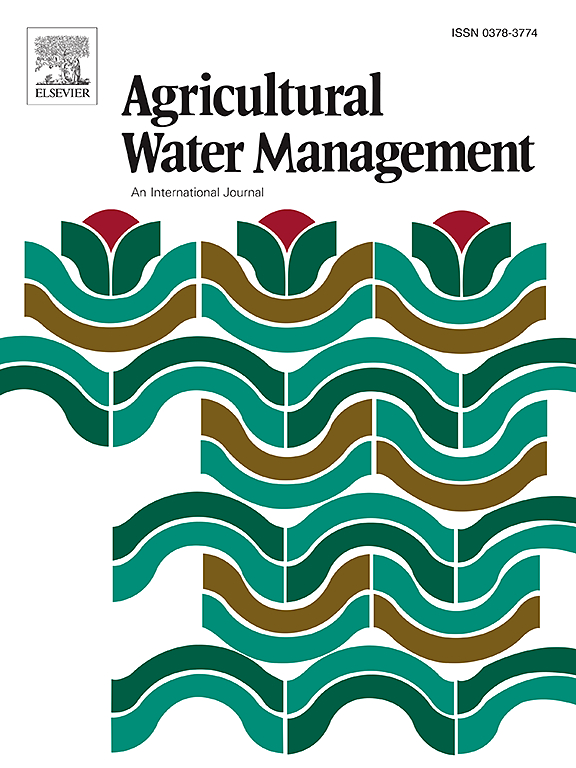Integration of Sentinel-1 and -2 imagery through advanced cloud computing improves hillside vineyard soil moisture analysis
IF 5.9
1区 农林科学
Q1 AGRONOMY
引用次数: 0
Abstract
Grape yield and quality are tightly linked to soil moisture (SM), making SM monitoring critical, especially as climate change increases reliance on irrigation in rain-fed areas. Sentinel-1 (S1) radar and Sentinel-2 (S2) optical satellites offer valuable high-resolution, frequent data streams ideal for measuring surface SM dynamics. However, despite the recognized potential of satellite remote sensing, Change Detection (CD) techniques have not been widely applied for SM monitoring within more challenging hillside grapevine vineyard environments. To address this gap, this study developed and validated two CD methods for retrieving SM at 20 m resolution using Google Earth Engine. The first method (CDS2) used S2 optical bands (Red, NIR, SWIR), while the second (CDS1S2) combined S1’s C-band radar (VV polarization) with S2 optical data. The methods were tested in two hillside vineyards (northern/southern Italy) and validated using independent reference data from flat bushlands (TxSON, Texas). Comparisons with in-situ measurements showed both methods effectively captured SM dynamics. However, combining S1 and S2 data (CDS1S2) provided significantly more accurate estimates than using S2 alone (CDS2), achieving higher R² (0.23–0.41 vs. 0.16–0.21) and lower RMSE (3.6–5.7 % vs. 3.8–7.1 % [m³/m³]). This improvement is attributed to S1's ability to penetrate vegetation and operate under various atmospheric conditions. This research demonstrates a scalable, user-friendly, and reproducible geospatial approach for precision viticulture. It highlights the potential of integrating advanced remote sensing technologies to enhance vineyard water management and sustain agricultural productivity amidst environmental changes.
通过先进的云计算集成哨兵1号和2号图像,提高了山坡葡萄园土壤湿度分析
葡萄的产量和质量与土壤湿度(SM)密切相关,因此监测土壤湿度至关重要,特别是在气候变化增加了对雨养地区灌溉的依赖的情况下。Sentinel-1 (S1)雷达和Sentinel-2 (S2)光学卫星提供有价值的高分辨率、频繁的数据流,是测量地表SM动态的理想选择。然而,尽管卫星遥感具有公认的潜力,但变化检测(CD)技术尚未广泛应用于更具挑战性的山坡葡萄园环境中的SM监测。为了解决这一问题,本研究开发并验证了使用谷歌Earth Engine在20 m分辨率下检索SM的两种CD方法。第一种方法(CDS2)使用S2波段(Red、NIR、SWIR),第二种方法(CDS1S2)将S1的c波段雷达(VV偏振)与S2波段光学数据相结合。这些方法在两个山坡葡萄园(意大利北部/南部)进行了测试,并使用来自平坦丛林(德克萨斯州TxSON)的独立参考数据进行了验证。与现场测量结果的比较表明,两种方法都能有效地捕获SM动态。然而,结合S1和S2数据(CDS1S2)提供了比单独使用S2 (CDS2)更准确的估计,获得更高的R²(0.23-0.41 vs. 0.16-0.21)和更低的RMSE(3.6-5.7 % vs. 3.8-7.1 % [m³/m³])。这得益于S1穿透植被的能力和在各种大气条件下运行的能力。这项研究展示了一种可扩展的、用户友好的、可复制的精确葡萄栽培地理空间方法。它强调了整合先进遥感技术在加强葡萄园水管理和在环境变化中维持农业生产力方面的潜力。
本文章由计算机程序翻译,如有差异,请以英文原文为准。
求助全文
约1分钟内获得全文
求助全文
来源期刊

Agricultural Water Management
农林科学-农艺学
CiteScore
12.10
自引率
14.90%
发文量
648
审稿时长
4.9 months
期刊介绍:
Agricultural Water Management publishes papers of international significance relating to the science, economics, and policy of agricultural water management. In all cases, manuscripts must address implications and provide insight regarding agricultural water management.
 求助内容:
求助内容: 应助结果提醒方式:
应助结果提醒方式:


